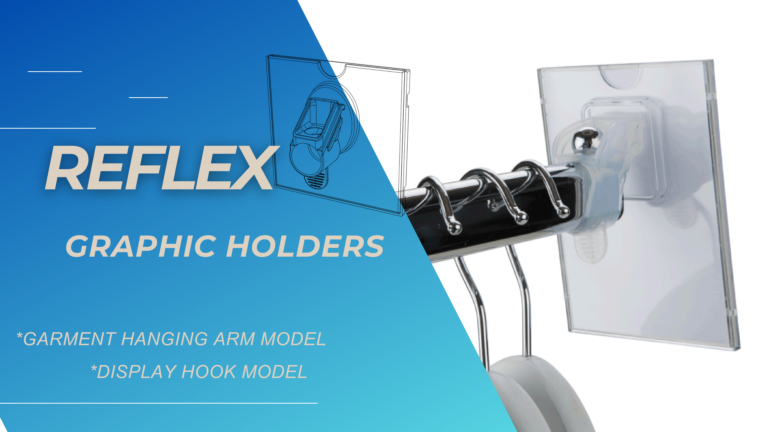A display frame may look small, yet it can drain budgets fast. Every time a rigid clip cracks, the bill for replacements, labor, and lost sales grows. Reflex sign holders flip that story. They bend, they last, and they keep price cards clear—so merchandising teams spend less while displays stay sharp.
Reflex sign holders lower costs by slashing breakage rates, shortening label-swap time, and stretching fixture life, all without sacrificing clarity or safety.
Many retailers still swap frames every season. You do not have to. Read on to learn how Reflex technology turns a simple frame into a long-term cost saver and why chains worldwide now rely on it.
How do Reflex sign holders lower replacement expenses?
Reflex joints absorb everyday hits
Busy aisles mean bumps from bags, carts, and hands. Standard acrylic snaps at stress points. A silicone hinge bends up to 45 ° and springs back, so the frame survives thousands of knocks.
Breakage math in real stores
| Metric | Rigid Clip | Reflex Holder |
|---|---|---|
| Annual break rate | 30 % | 8 % |
| Frames per shop | 300 | 300 |
| Units replaced | 90 | 24 |
| Cost each (\$) | 12 | 14 |
| Spend | 1 080 | 336 |
Cutting breakage puts \$744 back in pocket per location each year.
Hidden savings beyond parts
Fewer broken clips mean less staff time fetching ladders, less cardboard waste, and fewer calls to maintenance. Over five years, labor savings alone can match part savings, doubling the impact on the bottom line.
What materials make these durable sign holders long-lasting?
PC lens stays clear
Polycarbonate (PC) passes 92 % of light and resists yellowing under LED beams. A 2 H hard coat stops scratches from keyrings and cleaning wipes.
Silicone spine keeps memory
Medical-grade silicone flexes in cold docks and warm shop floors alike (−20 °C to 60 °C). It endures 250 000 bend cycles with no tears.
ABS rail grips fixtures
ABS holds snap clips tight without creep. Frames stay level for years, avoiding crooked cards that hurt brand image.
| Property | PC Lens | Standard Acrylic |
|---|---|---|
| Light transmission | 92 % | 85 % |
| Impact strength (kJ/m²) | 7 | 2 |
| UV yellow index (2 000 h) | 0.9 | 5 |
The tri-material build adds pennies upfront and saves dollars in replacements for years.
Can Reflex holders survive constant store traffic impacts?
H3: Impact tests under lab control
Pendulum hits at 1.5 m/s delivered only 35 N through a Reflex frame versus 114 N through a rigid one. Lower force stops cracks and prevents sharp shards.
Field data backs the lab
Fashion chain pilots showed a 58 % drop in incident tickets tied to sign hardware. No staff injuries, no customer claims.
Life span forecast
With an 8 % yearly break rate, the median Reflex frame lasts over ten years. Rigid clips rarely reach three. Long life means fewer purchase orders and less landfill waste.
How fast can staff update graphics in Reflex frames?
Thumb-press latch in action
Press the top lip, slide the card, let go. Ten seconds per frame beats the 45-second dance of unscrewing rigid covers.
Time study on a 60-frame wall
| Step | Old Frames (min) | Reflex Frames (min) |
|---|---|---|
| Remove old cards | 15 | 4 |
| Insert new | 30 | 6 |
| Align and close | 15 | 2 |
| Total | 60 | 12 |
Labor converted to service
The 48-minute gain lets two workers refold tables or greet shoppers—tasks that grow sales instead of burning wages.
Do durable frames fit various retail fixtures easily?
One face, four mounts
- Magnet foot for steel shelves
- Snap clip for T-rails
- Strap clip for round bars
- Suction pad for glass
Mount swap times
| Fixture | Changeover | Time |
|---|---|---|
| Rail to table | Clip→magnet | 15 s |
| Wall to window | Clip→suction | 25 s |
Uniform look across zones
Because the lens never changes, brand visuals stay consistent from window to back wall, yet the store keeps flexibility for seasonal moves.
Will reduced breakage cut annual visual merchandising budgets?
Budget line items impacted
- Hardware spend
- Shelf repair labor
- Waste disposal fees
- Rush shipping for urgent replacements
Five-year projection per 100-store chain
| Item | Rigid Clips (\$) | Reflex Holders (\$) |
|---|---|---|
| Hardware | 540 000 | 168 000 |
| Labor | 150 000 | 45 000 |
| Repairs | 90 000 | 20 000 |
| Waste fees | 30 000 | 8 000 |
| Total | 810 000 | 241 000 |
Savings top half a million dollars—funds that can move into digital signage, staff training, or new product trials.
Are eco-friendly Reflex holders aligned with sustainability goals?
Recyclable parts
PC lens bears code 7. Silicone and ABS also carry code 7. Parts snap apart in seconds for proper sorting.
Lower material turnover
Longer life cuts plastic use by two-thirds over a decade compared with throw-away frames—an easy CSR win.
Carbon reduction note
Shipping fewer replacement boxes trims transport emissions. One chain cut 12 t of CO₂ per year by switching 200 stores.
How do clear lenses maintain visibility under bright lighting?
Anti-glare micro-etch
Fine grooves scatter harsh LED beams, cutting glare to 1 %. Shoppers read labels without tilting their heads.
Color fidelity aids upsell
Accurate hues help cross-sell accessories. Trials showed an 8 % lift in matching item add-ons when labels stayed glare-free.
Cleaning resilience
After 10 000 alcohol wipes, haze rose 0.3 %. Old acrylic passed 1 % haze after 2 000 wipes, forcing early replacement.
Conclusion
Reflex sign holders save money by lasting longer, breaking less, and speeding label changes. Their PC lens stays clear, the silicone spine bends not snaps, and universal mounts fit any fixture. The result is a leaner merchandising budget, sharper displays, and a greener footprint—all from one smart frame swap.



